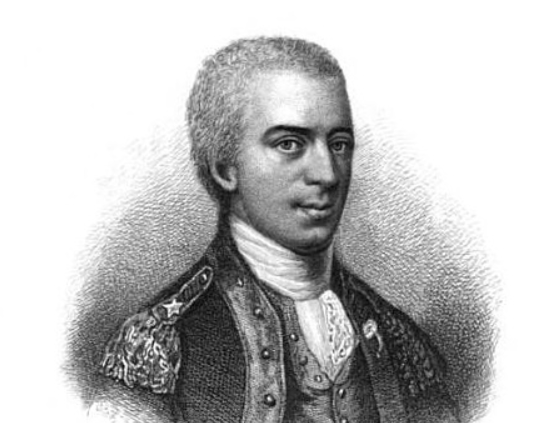John Laurens Joins Washington's Family
John Laurens was a member of George Washington's 'Family' during the American Revolutionary War.
This 'Family' consisted of his most trusted aides-de-camp in the Continental Army, many of whom (like Laurens, Hamilton and Lafayette) were young men. As Washington never had sons of his own, he looked upon these soldiers as if they were his own children.
John Laurens
John Laurens was raised in a privileged household in South Carolina. His father, Henry Laurens, brought John and his brothers to Europe for their education.
John studied in London and Switzerland over a six year period, learning many languages and becoming more cosmopolitan than most of his fellow colonists.
During his stay in Europe, the American Revolution began. Despite having just married (due to getting a friend pregnant), Laurens left his family behind and returned to America.
He was a Patriot, and his country needed him.
Washington's Family
Laurens arrived in the United States almost a year after independence had been declared.
Since his father (who by now was a member of the Continental Congress) could not talk John out of joining the army, he used his power to get his son a high rank.
At only 23, John Laurens was appointed as an aide-de-camp to General Washington, becoming part of the ‘family.’ It was here that Laurens became lifelong friends with the Commander’s two ‘adopted sons’ Alexander Hamilton and the Marquis de Lafayette.
Laurens served in many campaigns throughout the Revolutionary War. He quickly became known for bravery that verged on recklessness.
John was injured at the Battle of Germantown, being shot in the arm while attempting to storm a house.
Slaves
Laurens spent his first summer back in America with the soldiers at Valley Forge.
During this time, John proposed offering slaves their freedom if they would fight in the Continental Army. Despite strong resistance, Washington eventually gave him permission for this task.
Additionally, Laurens convinced the Continental Congress to allow him to raise a battalion of 3000 slaves. (It certainly helped that his father was now President of the Continental Congress). Unfortunately, his attempts were stopped by many leaders in South Carolina, the State he was instructed to recruit from.
What makes this all the more interesting is that the Laurens family had made a large portion of their fortune in the slave trade. John himself stood to inherit a substantial number of slaves.
Laurens, however, at some point in his life developed a strong hatred for this institution. He took his beliefs much farther than any of his contemporaries by stating that black and white people are inherently the same, and deserve the same liberties.
Laurens was much more forward thinking in this subject than many of his most pro-abolition contemporaries.
Duel
After participating in the battle of Monmouth, John challenged Charles Lee to a duel. This was due to Lee’s questionable comments regarding Washington’s leadership.
John shot Lee in the side during the first volley. After this, Lauren’s second (AKA assistant) halted the duel. This man was none other than eventual duel victim Alexander Hamilton.
Laurens then traveled to South Carolina to participate in the Southern Department of the War. He went to Charleston where he was taken prisoner with the rest of the captured army.
Minister to France
Fortunately, John was sent to Philadelphia on parole.
After his father’s ship to the Netherlands was captured (and he was placed in the Tower of London), John was chosen as a Minister to France. He sailed with Thomas Paine and they joined Benjamin Franklin in securing a loan from the French.
Laurens was also able to complete his imprisoned father’s job by receiving a loan from the Dutch.
The Battle of Combahee River.
The still-young man returned from France in time to join the Continental Army in the Siege of Yorktown. He was part of the legendary storming of redoubt number 10.
Laurens took to assisting Major General Nathanael Greene in running a spy network through the still occupied city of Charleston.
During this time, he was out on patrol when he encountered a small British force.
Although the war was technically won, peace had yet to be declared.
This encounter lead to the Battle of Combahee River, a minor fight which had no real effect on the war. It did, however, have a great effect on the Continental Army.
John Laurens was shot and killed at Combahee River.
Still just 27, there was every indication he would have played a major role in the creation of the new United States government. Instead, as Greene later said, he was killed in a, “paltry little skirmish.”
To learn more about John Laurens, I recommend 'John Laurens and the American Revolution.' Which you can pick up below through our affiliate, Amazon, or from your local library.
Please don't forget to subscribe to our email list for a new Founder every day!.






